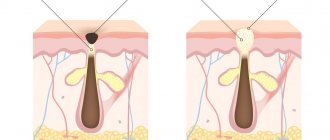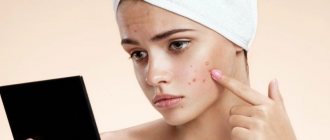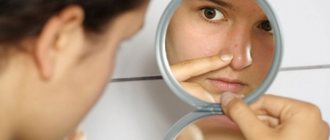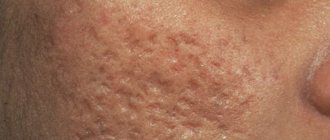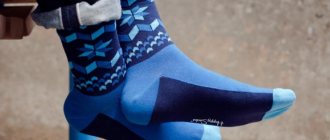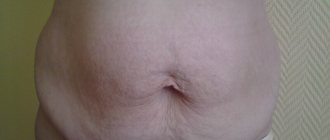Causes of spots on the face
Causes of age spots on the face
Learn about the different types of dark spots.
Since dark spots can be caused by a number of different factors, learning about the different types will give you a head start when it comes to figuring out how to get rid of them. Here are three different types of hyperpigmentation:
- Lentils
. These are dark spots caused by exposure to ultraviolet rays from the sun. 90 percent of people over 60 have them, but many much younger men and women also have sun-related dark spots. The spots appear scattered in no particular pattern. - Melasma
. This type of dark spots is caused by hormonal fluctuations. Women may see darker spots appear on their cheeks during pregnancy or menopause. It is also a side effect of birth control pills and hormone therapy. Melasma can also occur as a result of thyroid dysfunction. - Post-inflammatory hyperpigmentation (PIH)
. These are dark spots that occur as a result of trauma to the skin, which can be caused by psoriasis, burns, acne and certain skin care treatments that are difficult on the skin.
Find out what causes stains
Once you understand what you're dealing with, you can choose a course of treatment and start making lifestyle changes to prevent new dark spots from appearing.
Ask yourself these questions to determine what's behind your dark spots:
- Do you often use a solarium or tan in the sun? If you tend to get high sun exposure and you don't wear a lot of sunscreen, you may have spots. Topical treatments and avoiding sun exposure are the best way to get rid of this type of hyperpigmentation.
- Do you have a current medical condition for which you are on medication? Are you pregnant, on birth control, or taking hormone therapy? You may have melanoma. It can be difficult to treat, but there are certain techniques that can make a difference.
- Have you had severe acne, plastic surgery, or other long-term skin conditions?
Causes of red spots on the face
Red spots on the skin are a common medical complaint. When spots occur they are sometimes called rashes.
Rashes can occur due to skin infections, disseminated infections (those that have spread throughout the body), allergic reactions, or skin irritations. When the red bump or rash is flat, it is medically known as a macula. When the red spot is raised, it is known as a papule. Erythema is the medical term for redness of the skin.
Red spots on the skin that appear alone may be a small, benign tumor of the blood vessels known as a hemangioma. Tiny, pinpoint hemorrhages can be seen in the skin and are called petechiae. Bleeding disorders can also lead to the formation of purplish-red spots that are larger, known as purpura.
The rash may be associated with other symptoms such as hives or itching. Red spots on the skin that are associated with underlying medical conditions will be associated with symptoms of the underlying condition.
Other causes of red spots on the skin
- bacterial infection
- bleeding disorder
- fungal infection
- Hemangioma
- Use of medications
- toxic epidermal necrolysis
- viral infection
Causes of Acne Spots on Face
Whenever you get a pimple, you probably want it to heal quickly. But sometimes pimples leave a dark spot on the skin even after the pimple has disappeared. This is frustrating, but not uncommon.
Getting rid of these dark spots on your skin starts with understanding what causes them in the first place.
When a pimple appears on your skin, it is technically a form of inflammation. And as your skin heals and new epithelial cells are formed, it is possible that the cells sent to help repair the surface of your skin contain too much melanin.
Melanin is what gives your skin its color, and when some cells have more melanin than others, the result is a darker area of skin. This is called post-inflammatory hyperpigmentation.
Anything that causes your skin inflammation to last longer, such as if you pick out a spot, can increase your chances of developing post-inflammatory hyperpigmentation.
People who have naturally darker skin tones are more prone to this condition.
Etiology
There are several causes of facial redness: psychological, external, physiological, somatic.
Psychological ones include:
- suffered stress, prolonged depression;
- emotional outbursts;
- isolation, low self-esteem;
- nervous tension, strong excitement.
External or exogenous causes:
- strong and/or prolonged wind;
- low or too high air temperature;
- reaction to alcoholic drinks or spicy foods;
- use of low-quality cosmetics;
- long exposure to open sun.
Physiological reasons:
- light skin tone, genetic predisposition;
- thoughtless use of antibiotics;
- minor damage to facial skin or blood vessels;
- the appearance of a red network of blood vessels associated with age-related changes in blood vessels;
- lack of oxygen in tissues.
Somatic disorders:
- lack of thyroid hormones, diabetes;
- constipation, decreased hydrochloric acid content in the stomach, inflammation of the gastrointestinal mucosa, infections;
- dermatitis that occurs as a result of an allergic reaction to food, pollen (redness occurs around the eyes, mouth);
- rosacea;
- systemic lupus erythematosus;
- carcinoid syndrome;
- demodicosis
How to remove pigment spots on the face?
Start with manual peeling
If you've only had dark spots for a month or two, they may be contained in the top few layers of your skin. You can get rid of them by simply exfoliating your face. Exfoliation is the process of removing the top layer of skin, bringing new skin to the surface.
- Find an exfoliating cleanser that contains tiny particles to remove the top layer. You can also make your own by mixing ground raw almonds or ground oatmeal into your regular laundry detergent. Apply it on dark spots using circular motions.
- Electric exfoliators, like the Clarisonic, go a little deeper than your standard exfoliating cleanser. They work by gently scraping dead skin cells from your face. You can find them online or in pharmacies.
- Try using a product with glycolic or salicylic acid
Try topical acid treatment
They are available both prescription and over-the-counter. They contain alpha hydroxy acids, beta hydroxy acids or retinoids. The application of these different acids removes the top layer of dead skin cells, allowing fresh cells to grow so that the skin is rejuvenated. These procedures are used to treat hyperpigmentation of all types.
- Alpha hydroxyl acids include glycolic acid, mandelic acid, citric acid, lactic acid, and others. These acids are often obtained from foods and other foodstuffs. They exfoliate the skin effectively but are gentle enough for those with sensitive skin. Alpha hydroxyl acids can be found in serums, creams, moisturizers and peels.
- Beta hydroxy acid is also known as salicylic acid. It is a common ingredient in over-the-counter acne medications. Salicylic acid can be applied in a cream, serum, cleanser or peel.
- Retinoic acid is also known as tretinoin, or Retin-A. Retinoic acid is a form of vitamin A. It is a very effective treatment for acne and dark spots. It is available in creams and gels.
- If you're looking for an over-the-counter product, try to find one that contains a combination of the following ingredients: hydroquinone, cucumber, soy, kojic acid, calcium, azelaic acid, or arbutin.
Consider a chemical peel
If surface treatments don't sufficiently fade your dark spots, you may want to consider a chemical peel. Chemical peels literally remove the top layers of your skin. They often contain the acids described above in high concentrations. They are classified into three strength levels: light, medium and deep.
- Jessner peels are common treatments for getting rid of dark spots from the sun, hormones, or post-inflammatory hyperpigmentation.
- Light chemical peels typically include alpha hydroxyl acids. Glycolic acid and lactic acid are common ingredients. They are considered the most effective peels for treating dark spots.
- Medium chemical peels include TCA, or trichloroacetic acid. Many people recommend this peel for dark spots due to sun damage. For best results, it is usually repeated every two weeks until the spots are sufficiently faded. These peels are generally not recommended for people with darker complexions as they may cause darker spots to appear after the skin has healed.
- Deep chemical peels contain phenol, or carbolic acid, as their active ingredient. They are often used for deep wrinkles, but also to correct severe sun damage. Phenolic peels are very durable and are administered under general anesthesia. It may take several months for results to show how the skin is healing.
Home remedies to get rid of age spots
Rub your skin with citrus fruits.
Citrus fruits contain high amounts of vitamin C, also known as ascorbic acid, along with citric acid. These acids help shed the top layer of skin without causing damage. Here are some ways to use them.
- Squeeze out some juice and blot your skin with it. Women have been using straight lemon juice to lighten their skin for centuries, but you can use orange, grapefruit or lime. Cut the fruit in half and squeeze the juice into a cup or bowl. Using a cotton ball, apply it to your dark spots. Leave it on for 20 minutes, then rinse off. Repeat this once or twice a day.
- Make a lemon and honey face mask. Mix the juice of half a lemon with 2 teaspoons of honey. Mix well and apply on face. Leave it on for 30 minutes, then rinse well.
- Make a scrub from citrus fruits and milk powder. Mix 1 teaspoon each of water, milk powder and the juice of your favorite citrus fruit. Mix into a soft paste and massage onto the skin. Rinse well.
Try vitamin E.
A powerful antioxidant, vitamin E helps repair damaged cells and strengthen new ones. You can use vitamin E as a treatment on its own, or boost its benefits by also eating foods high in vitamin E.
- Topical Use:
Massage pure vitamin E oil directly onto your dark spots. With daily use, your spots will disappear. - Dietary sources:
Add these foods to your diet to get even more vitamin E: nuts (almonds, peanuts, pine nuts), sunflower seeds, wheat germ oil and dried apricots.
How to get rid of red spots on the face at home?
Apply hydroquinone to whiten unwanted sun spots.
Hydroquinone is another common over-the-counter cream used to treat dark or large sun spots. Before applying the cream, put on a pair of latex gloves. Apply a small amount of whitening cream directly to each sun spot and rub it into 1 gloved finger. Use the cream daily or as often as directed on the packaging until the stains are significantly lighter.
- Hydroquinone works relatively slowly. You will need to apply the cream for 8-12 weeks to start seeing effects.
- If you experience pain or a burning sensation while using hydroquinone cream, wash your face and stop using the cream.
Lighten stains with products that contain kojic acid at night before bed
Several common over-the-counter creams contain kojic acid. Derived from fermented rice, this acid has been shown to reduce the appearance of sun spots. 30 minutes before going to bed, apply a small drop of topical cream to sun spots on your face, arms, and hands and massage the cream into your skin. The product works slowly, so you will need to apply for a few weeks or even a couple of months before you see results.
- Look for kojic acid in beauty products such as skin lotions and creams. They contain relatively weak concentrations of acid, usually between 1% and 4%. If you're looking for kojic acid skin products at your local pharmacy, check the beauty and skin care section.
- If you have sensitive skin, products containing kojic acid may cause irritation, redness and inflammation. If you notice these symptoms, stop using the cream.
Home remedies to get rid of red spots
Cut a piece of papaya
Papaya fruits contain the enzyme papain. Papain helps exfoliate the skin, making room for new skin cells to appear. Papaya also contains vitamin C and vitamin E. Papain is most concentrated while papaya is still green, but you can also use juicier fruits. Peel and deseed your papaya, then try one of the following:
- Cut a piece of papaya and place it on the dark spots you want to get rid of. Keep it there for 20-30 minutes. Repeat twice daily for best results.
- Make a papaya face mask. Cut the papaya into pieces and then use a blender or food processor to blend the fruit into a smooth paste. Apply the mask to your face and neck. Leave it on for about 30 minutes, then rinse well.
Try aloe vera
The aloe vera plant has many health benefits. This is an excellent moisturizer and is effective for healing sunburns. It can also help dark spots fade. If you have an aloe plant at home, break off a small piece, squeeze the pulp into your hand, and apply it directly to your dark spots. You can also find aloe gel in stores. Pure aloe vera will work best, so make sure you buy a 100% aloe vera product.
Try red onion
Onion has acidic properties that work to lighten dark spots on the skin. Worth a try if you don't have lemon on hand! Peel the red onion, cut it into pieces and process it either in a juicer or in a blender. Use a cotton swab to dab some of the onion on your dark spots and leave it on for 15 minutes before washing it off.
Fractional RF lifting –
At the beginning of the article, we already said that such devices are effective against red spots after acne. But at the same time they are very effective against atrophic scars after acne or chickenpox. We recommend 2 devices for this. Firstly, the Venus Viva device (made in Canada/Israel), which must be equipped with a NanoFractional RF tip. Secondly, eTwo™ and Elos Plus™ devices from , which must be equipped with a Sublative RF fractional tip.
The fractional tips of these devices are supplied with disposable applicators with microneedles (electrodes up to 1 mm in size), with the help of which thermal damage is produced in the epidermis and dermis. The damage is fractional in nature, i.e. they are surrounded by intact tissue for rapid re-epithelialization of damage. Damage to the epidermis is microscopic and not noticeable; the main effect is realized in the dermis.
Thus, this is an ablative technique (with damage to the stratum corneum of the epidermis), but unlike laser resurfacing procedures, fractional radiofrequency lifting has a very short rehabilitation period and no side effects. The method is effective not only for atrophic scars, but also for the treatment of post-inflammatory erythema and hyperpigmentation. Below you can see photos before and after a course of 3 fractional RF lifting procedures.
How to remove acne spots on your face?
Treatment for dark acne spots is different from treatment for acne scars. Scars require tissue to be damaged or overgrown. Scars are difficult to completely remove, and although they may fade over time, they usually remain visible.
Dark acne spots, on the other hand, are flat against the surface of your skin. They do not indicate any long-term damage to skin cells, pores, or follicles.
It may take some time, but dark spots tend to lighten over time and eventually go away completely. It can take anywhere from 3 months to 2 years for them to disappear from sight.
This doesn't mean you have to wait forever in hopes that your dark spots will disappear. There are many home remedies, over-the-counter products, and even dermatological treatments you can try to get rid of them faster.
Home Remedies to Get Rid of Acne Spots
Apply evening primrose oil to brown spots to help them fade over time.
Place a drop of evening primrose oil on your fingertip and then apply it to your brown spots. Use the treatment twice daily to help lighten your spots over time.
- Use the oil before applying other skin care products such as serums or lotions. Once the oil has dried, you can continue with your normal skin care routine.
Use a cream or serum that is labeled for skin lightening
Apply your brightening cream or serum every morning and evening after cleansing. Follow the directions on the label to make sure you use it correctly. Check the label to make sure it contains 1 or more of the following lightening ingredients:
- Hydroquinone
- vitamin C
- Azelaic acid
- Tretinoin
- Kojic acid
Apply aloe vera to brown spots to make them disappear slowly
Take Aloe Vera gel from a cut leaf or buy a tube of aloe vera gel from the store. Use a cotton swab to apply aloe vera directly to your dark spot. Let the aloe vera dry, then wash it off with cool water. Repeat twice daily until the dark spot disappears.
- You can obtain aloe vera gel directly from the plant by breaking off the leaf that will contain the gel. If you prefer to buy it in a store, choose a product that is 100% aloe vera gel.
Essential Remedies for Face Spots
Apply pineapple juice to dark spots daily to help lighten them.
The acid and enzymes in pineapple juice can naturally lighten your brown spots and possibly freckles. Soak a cotton swab in pineapple juice and then dab the juice directly onto your dark spots. Let it dry and then rinse your skin clean.
- The juice may cause some skin irritation or sensitivity. If this happens, stop using it and contact your dermatologist.
Apply a topical retinoid to blemishes to lighten them.
Wash your face before using topical retinoids. Wait 20 minutes and squeeze a pea-sized amount of topical retinoid cream onto 1 finger. Rub the cream into spots on your face, neck, arms and hands. Retinoids are derived from vitamin A and are a great way to lighten your sun spots. Apply the cream once a day until the spots lighten.
Tip: You can purchase topical retinoids over-the-counter (OTC) at your local pharmacy. If you find that an over-the-counter cream isn't working, ask your doctor to write a prescription for a full-strength retinoid.
Use yogurt face masks once every two weeks to remove dark spots or freckles.
The lactic acid in dairy products can fade brown spots on your skin, including age spots and freckles. Smooth the homemade mask onto your skin and leave it on for 20 minutes. Then rinse your face with cool water and pat dry with a clean towel.
Here are some ways to make a homemade mask:
- Mix equal parts yogurt and honey.
- Mix 1 tablespoon (15 ml) yogurt, 1 tablespoon (5 g) oatmeal and 2-3 drops honey.
lupus erythematosus
This is a disease of the autoimmune system in which the antibodies produced “attack” one’s own cells. Connective tissue is mainly affected. The disease is quite difficult to treat. Symptoms of lupus erythematosus are red, butterfly-shaped spots on the face (on the cheeks and nose). For some, the appearance of a red rash on the face is accompanied by alopecia, ulcers in the mouth, nose and vagina.
It should be noted that with this disease, red spots on the face appear in only 65% of patients.
Review of the best remedies for spots on the face
Concentrate for whitening age spots Achromin Anti-pigment
A highly active concentrate is intended for lightening and correction of age spots, targets pigmentation caused by exposure to UV rays, hormonal changes, photoaging, regulates melanin production and stimulates cellular renewal. Returns youthful, even and radiant color to the skin. Niacinamide in the serum is ideal for all skin types, safe for sensitive and problematic skin, helps stimulate collagen synthesis and improve the protective functions of the skin, helps reduce moisture loss from the skin and reduce pigmentation, softens, increases elasticity, moisturizes, tightens pores, soothes. Arbutin whitens due to its ability to inhibit melanin synthesis, evening out skin tone.
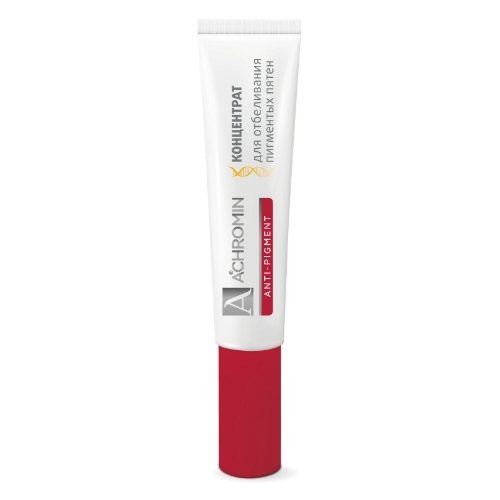
Korean restorative cream for damaged post-acne skin Mizon Acence Mark X Blemish After Cream
An effective cream to combat acne and acne marks. The face cream is based on propolis (12.5%) and Centella Asiatica extract, which have an antibacterial and healing effect. The cream can be applied even after mechanical impact on inflamed areas.
Sisley Intensive dark spot corrector
Sisley's extraordinarily powerful concentrated pigment spot correction emulsion formula works across the board to brighten, refine and soothe.
Cream for lightening pigmentation spots on the skin DSM
The cream softens and brightens the skin. Used for face and body skin. Recommended for use when signs of skin aging appear (small melanin spots on the skin, also called liver spots), excessive freckling, pregnancy spots, excessive tanning, as well as some diseases when the skin becomes dark in color and becomes dull.
An active complex of alpine extracts with a brightening effect, inhibits melanin synthesis, due to which hyperpigmentation is reduced, and the skin tone gradually becomes uniform. The vitamins included in the cream increase the protective functions of the epidermis, help maintain hydrobalance, and give the skin a healthy and beautiful color.
The Dead Sea mineral supplements included in the cream have a unique healing effect and have a beneficial effect on the skin. Skin tissue is strengthened, toxins are eliminated, and blood circulation is stimulated. Aspergillus mushroom extract provides skin protection, evens out complexion, tones, maintains and regulates moisture and effectively whitens by inhibiting tyrosinase activity.
Korean essence with BHA acid BHA Blackhead Power Liquid COSRX
Essence with BHA acid against acne and blackheads CosRx BHA Blackhead Power Liquid contains a high concentration of betaine salicylate, a BHA acid that eliminates blackheads and accelerates acne treatment, exfoliates dead particles of the epidermis, disinfects, reduces sebum production, tightens pores and brightens post-acne . The essence does not dry out the skin; on the contrary, it moisturizes and softens. In addition to BHA acid, the composition includes white willow bark hydrolate, niacinamide, panthenol and hyaluronic acid.
Rosacea
Rosacea or rosacea is a chronic disease that affects most Caucasian people in their third and fourth decades. Characteristic features include redness on the face and dilation of blood vessels in the skin. There are several forms of rosacea. With erythematotelangiectatic, a network of small blood vessels appears on the skin of the face. This form of the disease is often called rosacea. In papulopustular and phymatous forms, in addition to redness of the skin, red papules appear.
Demodicosis
The occurrence of demodicosis can easily be attributed to decreased immunity, strong emotional processes and stressful conditions. The cause of the disease is the subcutaneous demodex mite, which infects the face, neck, and ears. This creature constantly lives on people's skin. The human immune system helps keep the tick population within certain limits, so it does not cause harm. When immunity declines, demodex begins to actively multiply, which leads to the occurrence of demodicosis. The symptoms are as follows: inflammation of the dermis, acne, burning, puffiness, redness of the skin, peeling.
Drug therapy
Having received the results of the examination and determined the causes of red spots on the face, the doctor prescribes medications to eliminate unpleasant redness and rashes. List of medications prescribed for various diseases:
- for psoriasis and eczema - antiseptic medications (Uniderm, Bepanten, Akrustal and their analogues);
- for allergies - antihistamines (Triderm, Sinaflan, Panthenol, Flucinar, Elokom cream and ointment);
- when reacting to sun rays or cold - protective agents (balm “Rescuer” and analogues);
- for neuroses, stress and VSD - sedatives (based on motherwort, peony, valerian, Afobazol, Negrustin);
- for rosacea – “Mirvaso Derm”, “Metronidazole”, “Dirozeal”, “Azelik”, “Adapalene”, “Kontraktubeks”, “Skinoren”);
- for dermatitis - wound healing (D-panthenol ointment);
- for allergic reactions arising from smoking - antiseptic (Boro-Plus ointment);
for demodicosis - antiparasitic, antiseptic agents (ointments "Yam", "Alit", creams "Rozamet", "Manting", "Demalan").
